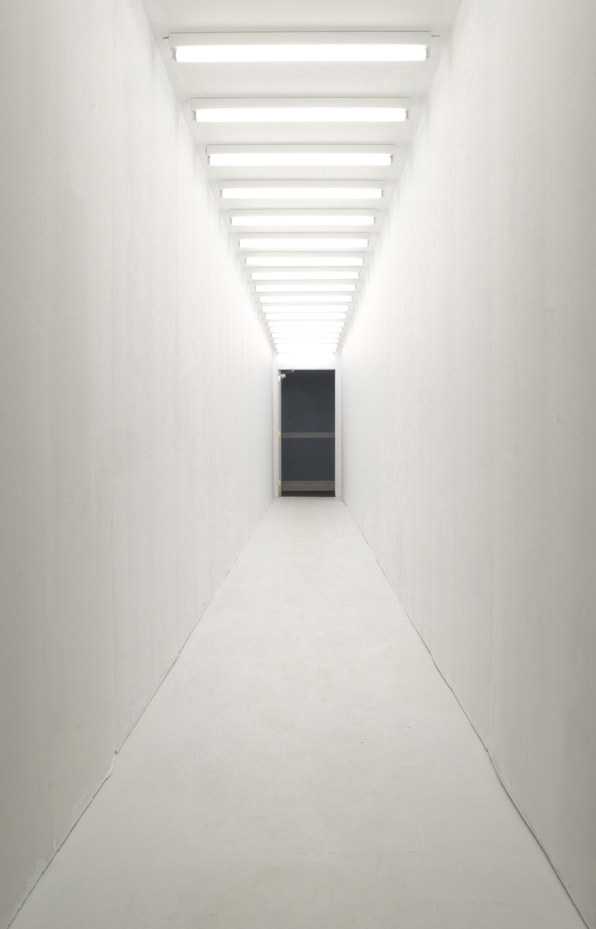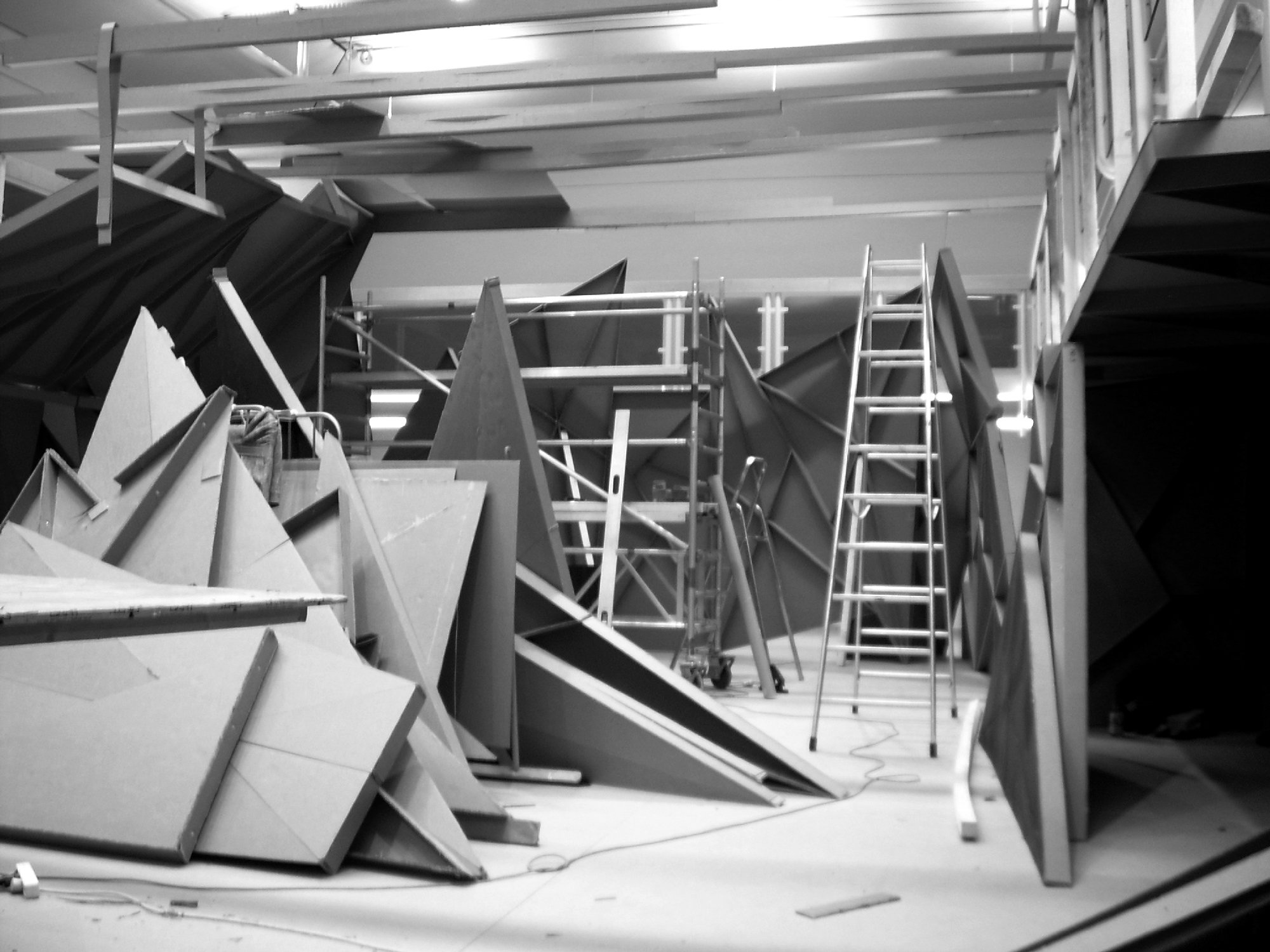ON CHAPELS, CAVES AND EROTIC MISERY
2005/2007
Installation: 500 cardboard sheets 4’x8’, carpet, MDF, 7 etched black mirrors, 21 handmade lamps, 47 architectural models, 16 doors, fluorescent light, dimensions variable.
Sculpture Center, New York.
The evolution of this work was the sculpting of a five-act play, and On Chapels, Caves and Erotic Misery is the fifth act. This evolution began in reference to David Lynch’s 1986 film Blue Velvet, and earlier versions of the work also make explicit reference to Kurt Schwitters' Merzbau. Constructed almost entirely of cheap, ephemeral materials such as cardboard and paper, this sprawling installation meticulously reconstructs aspects of Blue Velvet in a physical space, exploring the ability of architectural fragments to convey cinematic narrative. The work delves into the challenge of superimposing one space and structure over another: the first, artificially woven together through film editing; the second, a totalizing structure defined by the walls and activities of the exhibition space. At the point of their collision, the two structures dissolve and give way to a third reality, which is a thematic structure in and of itself. The installation begins in a dark anteroom that leads to a pitch-black hallway, where backlit glass screens display lines from Blue Velvet and other poetic references. This hallway leads to a room with neutral gray carpeting and numerous doors, some that open and some that do not, one of which that opens to an immaculate white passage illuminated overhead by eerily bright fluorescent lights. From there, one must pass back through the gray-carpeted room of doors to find one’s way forward. The sheer number of doors creates the need to keep circling back—evoking flashbacks or the feeling of a video on loop—before the viewer can find their way into a final room. It holds shelves of various table lamps, but the dominant elements here are intricate small-scale movie sets in boxes, some stacked on one another, portraying scenes from Blue Velvet. On Chapels, Caves and Erotic Misery engages with the mechanisms of enduring cinematic power—editing and scene-setting—recasting these processes in physical form, as if it has placed the viewer both inside and outside of the film at the same time.























